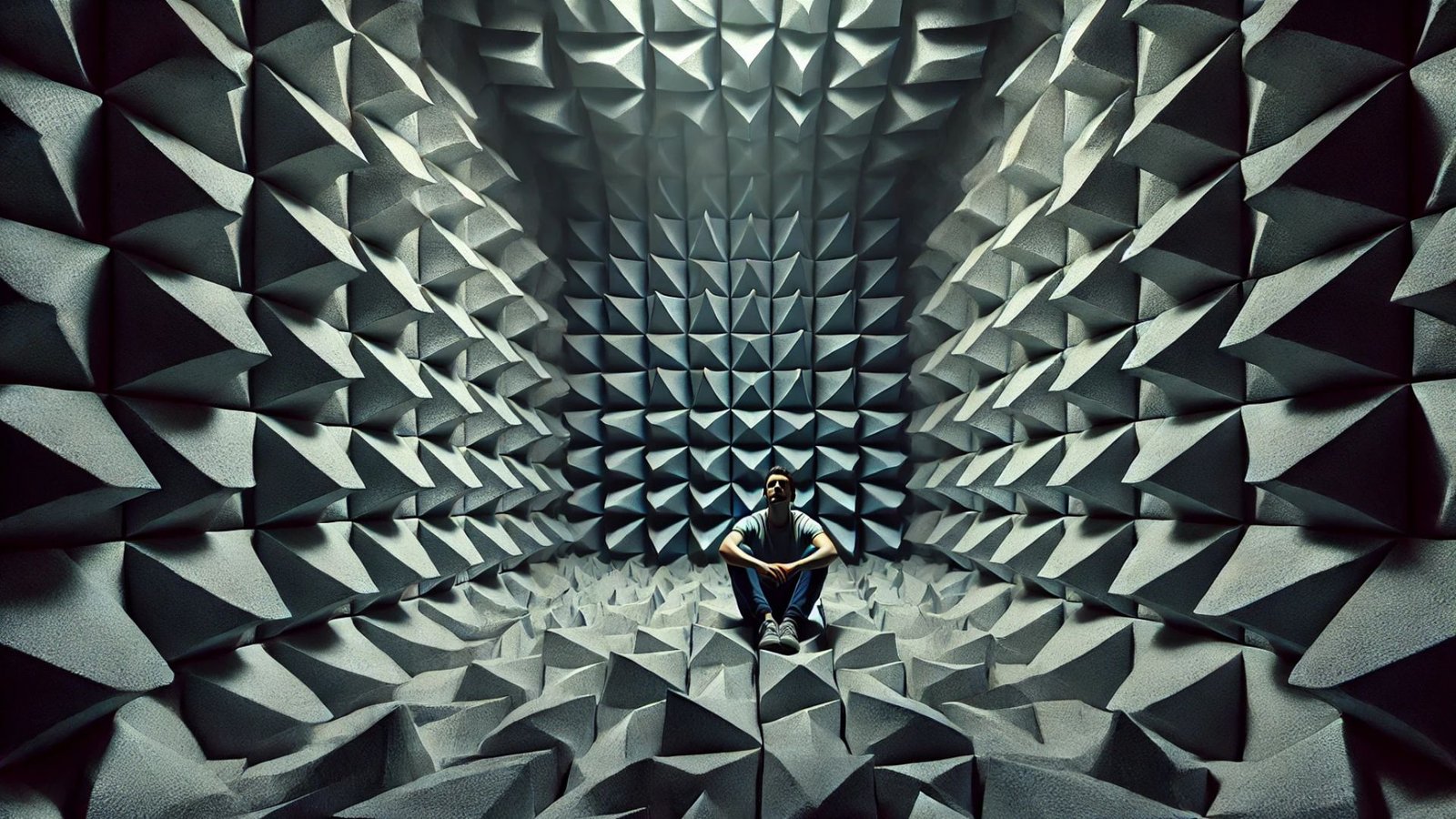Imagine standing in a room so quiet that you can hear your own heartbeat. No hum of electronics, no distant traffic—just the eerie sound of your own body at work. It might sound peaceful, but the truth is, extreme silence can drive you mad. Welcome to the world’s quietest room, an anechoic chamber at Microsoft’s headquarters in Redmond, Washington, where silence becomes a psychological experiment.
🔇 What Is an Anechoic Chamber?
An anechoic chamber is a specially designed room that absorbs all sound reflections, creating an environment of almost perfect silence. The walls, floor, and ceiling are lined with jagged, sound-absorbing wedges that prevent sound waves from bouncing back. The result? A room with a background noise level of -20.35 decibels, a record certified by the Guinness World Records.
To put this into perspective, normal conversation occurs at about 60 decibels, and even human breathing registers around 10 decibels. A negative decibel level is quieter than complete silence, at least as we experience it in the real world.
😵 The Strangely Unsettling Experience of Extreme Silence
While the concept of total silence might sound blissful, the experience is far from it. Many who enter the chamber report feeling disoriented and uneasy. The lack of external sound forces your brain to amplify the internal noises of your body—your heartbeat, the grinding of your joints, even the sound of your own blood flowing.
“After a few minutes, you start to lose your bearings,” says Gopal V. of Microsoft, who helps maintain the chamber. “Your sense of balance can go haywire because there are no sound cues to anchor you.”
⏳ How Long Can You Last?
Microsoft allows people to test their tolerance, but very few manage to last more than 30 minutes. The record? Just over 45 minutes, and even that person emerged visibly shaken.
It’s not just physical discomfort—mental strain sets in quickly. As the silence stretches on, participants often experience a loss of time perception, with minutes feeling like hours. Some describe the experience as claustrophobic, despite the room’s physical size.
🧠 The Psychological Effects of Extreme Silence
The human mind is not designed for sensory deprivation, and silence this intense can trigger hallucinations. Deprived of external input, the brain starts to create its own reality, leading to auditory and even visual hallucinations. This is why anechoic chambers are sometimes used for scientific studies on isolation and mental health.
In fact, astronauts preparing for space missions sometimes train in these chambers to simulate the extreme isolation of space, where silence and solitude are the norms. This training helps them build mental resilience and cope with the eerie quiet of the cosmos.
🌀 Why Does Silence Feel So Loud?
The phenomenon of silence feeling deafening is linked to the way our brains process sound. Normally, ambient noise provides a buffer for our senses, allowing us to focus selectively on important sounds. In the absence of this background noise, our brains crank up the volume on internal sounds, leading to the unsettling sensation that our body is far noisier than we realize.
Interestingly, this effect is often referenced in horror movies and psychological thrillers, where silence is used to build tension and unease. The absence of sound can make even the smallest noise feel jarring and unsettling.
🧘 Can Silence Be Therapeutic?
While extreme silence might be unnerving, moderate quiet environments can actually have therapeutic benefits. Many people use silence for meditation, focus, and stress relief. The key difference is that in a natural, quiet setting, there are still subtle sounds—a breeze, distant birds, the rustling of leaves—that help keep our minds grounded.
Studies have shown that periods of quiet can enhance creativity and improve mental clarity, as long as the silence is not absolute. It’s all about finding the right balance between external noise and internal peace.
🎭 Conclusion: A Sound of Madness?
The world’s quietest room might hold the record for silence, but it’s also a powerful reminder that absolute quiet isn’t always blissful. Our brains thrive on a delicate balance of sensory input, and too little can be just as overwhelming as too much. Next time you crave peace and quiet, maybe aim for a tranquil park instead of an anechoic chamber—your sanity might thank you for it!
So, would you dare to step into the world’s quietest room?


